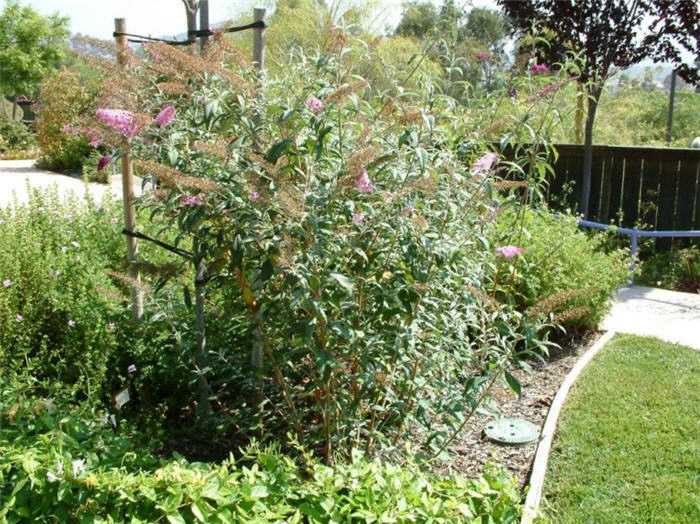| Botanical Name: Buddleja davidii | |
| Common Name: Butterfly Bush |

-
Anatomy
-
Culture
-
Design
Plant Type
Shrub
Height Range
3-6', 6-12'
Flower Color
Lavender, Pink, Purple, Red, Violet, White
Flower Season
Summer, Fall
Leaf Color
Grey Green, Silver
Bark Color
Brown, Grey
Fruit Color
n/a
Fruit Season
n/a
Sun
Full
Water
Medium
Growth Rate
Moderate
Soil Type
Sandy, Clay, Loam, Rocky, Unparticular
Soil Condition
Average, Rich, Poor, Well-drained, Dry
Soil pH
Acid, Neutral, Basic
Adverse Factors
Attracts Bees
Design Styles
English Cottage, Formal, Mediterranean, Ranch, Native Garden, Woodland
Accenting Features
Fragrance, Showy Flowers
Seasonal Interest
Summer
Location Uses
Background, Entry, Perennial Border, Shrub Border, Foundation, Patio, Walls / Fences
Special Uses
Cut Flowers, Hedge, Screen, Mass Planting, Small Spaces
Attracts Wildlife
Hummingbirds, Butterflies
Photographer: Steve Mullany/Sortomme
-
Description
-
Notes